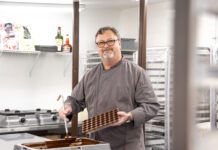In today’s society, appearance holds the utmost value. Skin, the body’s largest organ, is a reflection of both health and attractiveness. Skin conditions are among the most commonly occurring health problems on a worldwide scale, and they can have tremendous psychological, social and even financial effects on individuals. The good news is that most common skin conditions are treatable, leaving little if any impact.
Acne
No matter what you call it, acne can be an aggravating and unrelenting condition. While people of all ages develop acne, the part that hormones are thought to play in the condition causes teenagers and women who are either pregnant or experiencing their menstrual cycle to be the most commonly affected.
“In the majority of males, acne burns out in their early 20s, with the exception of back and chest acne. Unfortunately women aren’t always that lucky,” says Dr. Lawrence Gregg of the Tulsa Dermatology Clinic.
Commonly-held misconceptions are that chocolate, greasy foods and even dirt are factors in the development of acne. Experts say that hormones, bacteria, heredity and the use of certain medications are large factors in causing mild to severe acne.
The good news is that the majority of acne can be treated with over-the-counter medication. Experts recommend that if the condition is affecting social interaction and self-esteem due to skin damage and scarring seeking the attention of a qualified dermatologist could be called for. If consulting a dermatologist is needed, “most acne can be treated within a 16-week period with topical or systemic treatments,” says Gregg.
Topical medications containing benzoyl peroxide or antibiotics are most commonly prescribed. In cases of severe acne, oral antibiotics or isotretinoin is prescribed in order to reduce bacteria and inflammation.
Psoriasis
Affecting more than 7.5 million people, psoriasis is the most prevalent autoimmune disease in the United States. The Tulsa Dermatology Clinic sees an average of 20 patients per week for psoriasis alone. The condition is considered to be a chronic disease characterized by small, silvery scales, dry or cracked skin and, in severe cases, swollen or stiff joints.
The cause of psoriasis is related to the immune system and environmental factors that interact with those affected. In normal bodily function, the T-cell, a white blood cell, fights off infection and disease. In the case of a body affected by psoriasis, the T-cells attack healthy skin cells, causing an increase in both healthy skin cells and T-cells. This in turn causes a build-up of dead skin and white blood cells because the body does not have time to slough them off in a natural process.
Psoriasis manifests in several forms, including plaque psoriasis, the most common form of the condition, which causes painful, red, raised scaling lesions that occur all over the body, including the mouth and genitals.
Psoriasis is a severe, recurring condition in which several complications like social isolation, low self-esteem, depression and fluid and electrolyte imbalances can occur. For these reasons, Gregg recommends that individuals seek regular treatment from a qualified physician.
“Effective treatments for psoriasis are a combination of light therapy and systemic medications,” he says. “Thankfully, most cases are fairly mild and can be controlled with regular treatment.”
Rosacea
Rosacea is a skin disease that causes redness and pimples across the cheeks, forehead, chin and nose. Commonly referred to as “adult acne,” this condition affects a reported 16 million Americans.
“Rosacea is commonly seen in individuals of Celtic ancestry and between the ages of 35 and 78,” Gregg says.
Common symptoms of rosacea include a flushed face, red bumps appearing across the nose, cheeks, forehead and nose; tiny, red veins that have the appearance of spider webs; dry, irritated eyes and stinging facial skin.
Consistent medical treatment is recommended for this condition to prevent worsening of the disease.
“Treatments containing a sulfate agent, metro-gels, metro-lotions, and systemic medications are generally successful,” Gregg says.
























